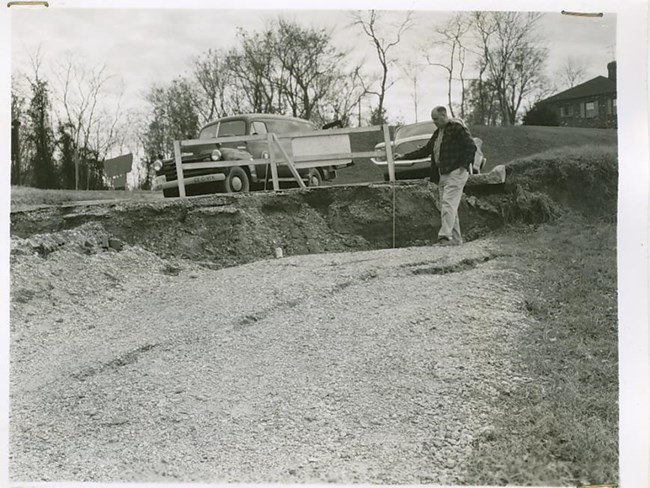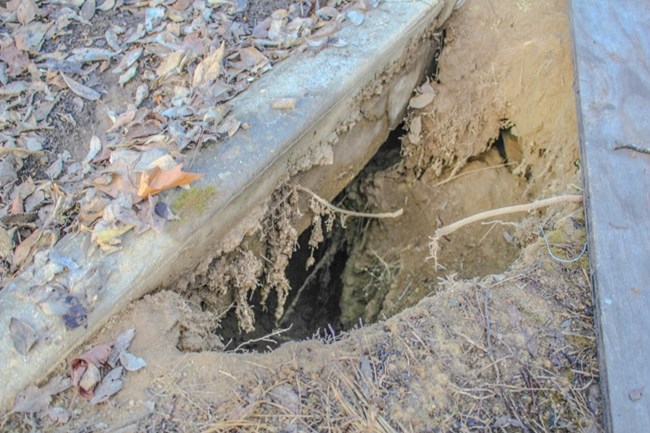
Today’s battle in the park isn’t one of North vs. South, but rather an entirely different battle: a battle with erosion. The loess soils covering the landscape are far from stable on slopes. You may notice closures in the park from time to time. Many of these closures are due to erosion making conditions unsafe for visitors and vehicles.
Erosion in its simplest form is the carrying away of earth materials by wind, water or glacier. Here in Vicksburg, only wind and water are contributing agents today, although the loess soil of the park was formed from glacial erosion of bedrock in Canada during the Pleistocene, before being carried to its current location by wind and water. 
The effects of erosion can be seen in many forms in the park, such as the cut-back of streams and gullies as well as loess piping which occurs when a concentrated flow of water forms discontinuous gullies and collapses the soil surface. The biggest erosional issue in the park today is mass wasting. Several types of mass wasting events can be observed in the park. Creep is a continuous, but extremely slow downward movement of land. It is the reason you often see headstones in old cemeteries at highly tilted angles. Slump occurs when the base of a slope is undercut, either by natural forces (such as a stream) or by manmade forces (such as a road cut). With the base undercut, there is not enough support for the land above and a block of earth material will typically move downslope as a unit, often called a “slump block.” Landslides are the most drastic and potentially dangerous mass wasting event that can happen in the park. Landslides occur faster than the other types of mass wasting. In the park, small landslides on the edges of gullies can often be seen after major rain events.
You may notice closures in the park from time to time. Many of these closures are due to erosion making conditions unsafe for visitors and vehicles. After Hurricane Harvey, in the summer of 2017, a large portion of soil under Confederate Ave washed away resulting in a 7 foot deep hole under the road which caused the National Park Service to close that portion of the road. MitigationLike all things on Earth, gravity will eventually win this battle, but in the meantime the National Park Service has taken several measures to control the erosion in order better preserve the landscape, to protect historic buildings and structures, and to keep the park safe to visitors. During the 1930s the Civilian Conservation Corp planted trees to prevent erosion in the park. Thousands of trees were planted in the park between 1933 and 1941. These were planted in areas of heavy erosion. In subsequent years the park has allowed for additional forest growth. The increase in trees and shrubs in the park has decreased the amount of erosion that occurs, however, the amount of new growth vegetation makes it harder to picture the historic landscape as it would have looked during the Vicksburg Campaign. Despite the increase in vegetation, erosion does still occur in large scales in the park today. Today, the park uses vegetation catered to specific soil conditions as well as engineered structures such as retaining walls in order to stabilize areas of heavy erosion. |
Last updated: February 26, 2018
